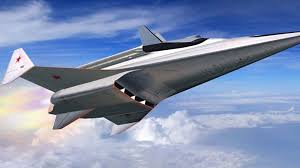
Breaking News
 Christmas Truce of 1914, World War I - For Sharing, For Peace
Christmas Truce of 1914, World War I - For Sharing, For Peace
 The Roots of Collectivist Thinking
The Roots of Collectivist Thinking
 What Would Happen if a Major Bank Collapsed Tomorrow?
What Would Happen if a Major Bank Collapsed Tomorrow?
Top Tech News
 EngineAI T800: Born to Disrupt! #EngineAI #robotics #newtechnology #newproduct
EngineAI T800: Born to Disrupt! #EngineAI #robotics #newtechnology #newproduct
 This Silicon Anode Breakthrough Could Mark A Turning Point For EV Batteries [Update]
This Silicon Anode Breakthrough Could Mark A Turning Point For EV Batteries [Update]
 Travel gadget promises to dry and iron your clothes – totally hands-free
Travel gadget promises to dry and iron your clothes – totally hands-free
 Perfect Aircrete, Kitchen Ingredients.
Perfect Aircrete, Kitchen Ingredients.
 Futuristic pixel-raising display lets you feel what's onscreen
Futuristic pixel-raising display lets you feel what's onscreen
 Cutting-Edge Facility Generates Pure Water and Hydrogen Fuel from Seawater for Mere Pennies
Cutting-Edge Facility Generates Pure Water and Hydrogen Fuel from Seawater for Mere Pennies
 This tiny dev board is packed with features for ambitious makers
This tiny dev board is packed with features for ambitious makers
 Scientists Discover Gel to Regrow Tooth Enamel
Scientists Discover Gel to Regrow Tooth Enamel
 Vitamin C and Dandelion Root Killing Cancer Cells -- as Former CDC Director Calls for COVID-19...
Vitamin C and Dandelion Root Killing Cancer Cells -- as Former CDC Director Calls for COVID-19...
 Galactic Brain: US firm plans space-based data centers, power grid to challenge China
Galactic Brain: US firm plans space-based data centers, power grid to challenge China
China builds world's fastest wind tunnel to test weapons that could ...

A hypersonic vehicle flying at this speed from China could reach the west coast of the United States in less than 14 minutes.
Zhao Wei, a senior scientist working on the project, said researchers aimed to have the facility up and running by around 2020 to meet the pressing demand of China's hypersonic weapon development programme.
"It will boost the engineering application of hypersonic technology, mostly in military sectors, by duplicating the environment of extreme hypersonic flights, so problems can be discovered and solved on the ground," said Zhao, a deputy director of the State Key Laboratory of High Temperature Gas Dynamics at the Chinese Academy of Sciences in Beijing.
The ground tests will significantly reduce the risk of failure when test flights of hypersonic aircraft start.
The world's most powerful wind tunnel at present is America's LENX-X facility in Buffalo, New York state, which operates at speeds of up to 10 kilometres per second – 30 times the speed of sound.
China has 202 of world's 500 fastest supercomputers. That's a lot of petaflops
Hypersonic aircraft are defined as vehicles that travel at speeds of Mach 5, five times the speed of sound, or above.
The US military tested HTV-2, a Mach 20 unmanned aircraft in 2011 but the hypersonic flight lasted only a few minutes before the vehicle crashed into the Pacific Ocean.
In March, China conducted seven successful test flights of its hypersonic glider WU-14, also known as the DF-ZF, at speeds of between Mach 5 and Mach 10.
Other countries including Russia, India and Australia have also tested some early prototypes of the aircraft, which could be used to deliver missiles including nuclear weapons.
"China and the US have started a hypersonic race," said Wu Dafang, professor at the school of aeronautic science and engineering at Beihang University in Beijing who received a national technology award for the invention of a new heat shield used on hypersonic vehicles in 2013.

 The State's Last Stand
The State's Last Stand


